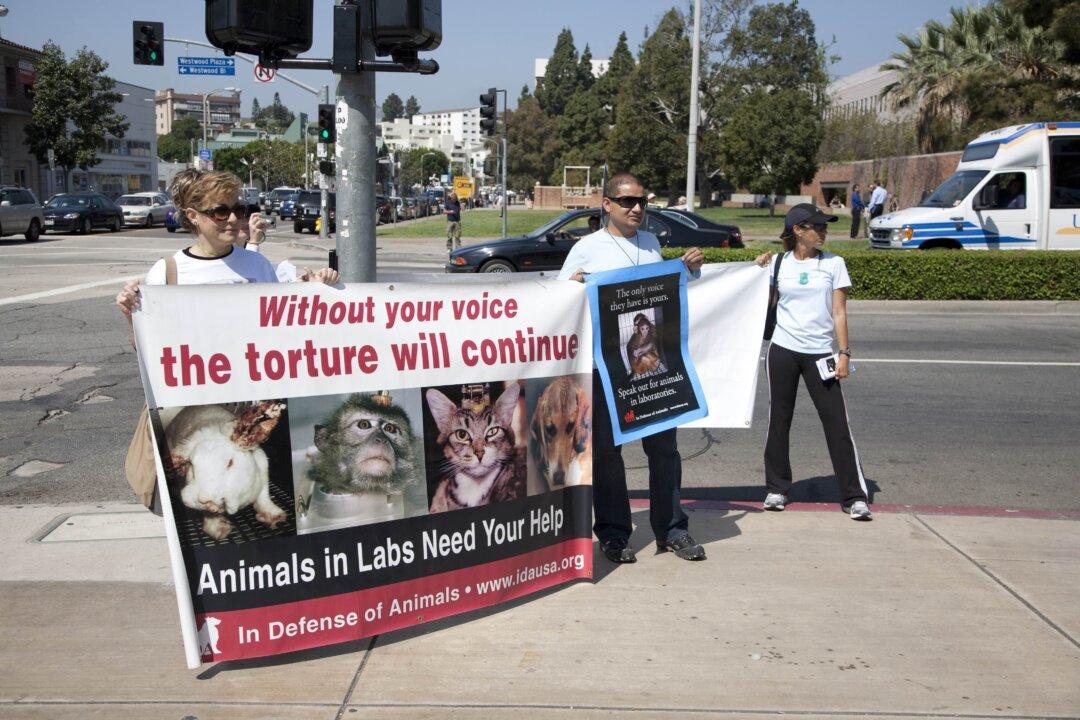If you are like most people, you know a lot more about how farm animals are treated on factory farms than dogs, primates and other animals are treated in US labs. It is no coincidence.
Exposure of what occurs behind the Plexiglass Curtain would be so damaging to National Institutes of Health (NIH)-funded university research contracts that millions are spent to prevent transparency. For example, in 2009 the University of Iowa was cleared to construct an $11.2 million, 35,000 square foot “subterranean vivarium that will house experimental animals to be used in biomedical research and offer an extra measure of protection from animal rights extremists,” reported The Scientist. The experimental animals include primates, sheep, pigs, and rabbits.





